DIGITAL:CANVAS\
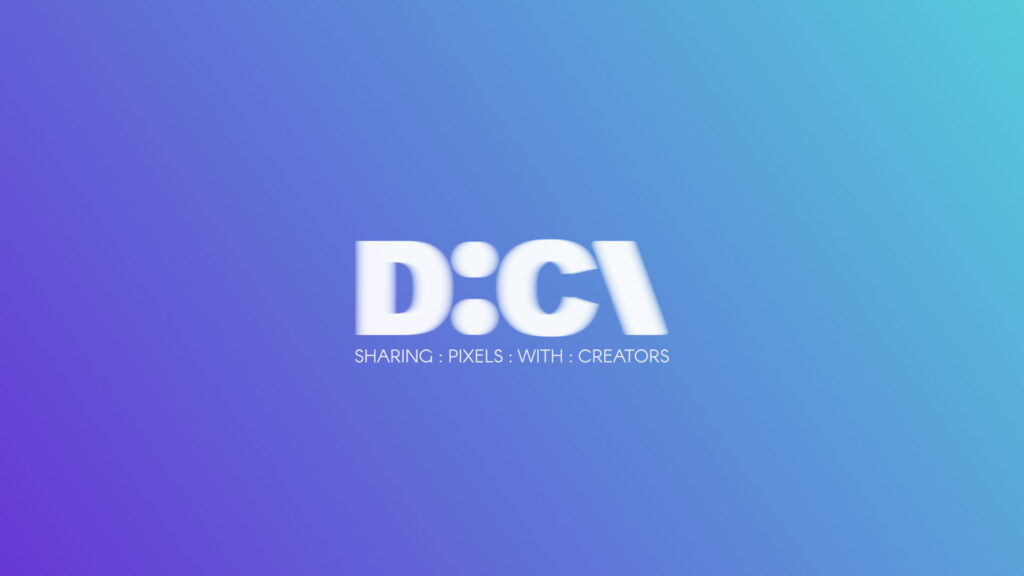
*Interview Taken by Gabriela Mateescu
Gabriela Mateescu talked to Marius Jurca, co-founder since January 2018 of the artist-run space DIGITAL:CANVAS\ in Timișoara.
The interview takes a keen interest in exploring the challenges and nuances of exhibiting digital art and running a space dedicated to it. Displaying digital art often involves complex technical considerations, and running a space dedicated to digital art may require investments in technology and infrastructure. This is one of the reasons that galleries and museums dedicated to new media art are nonexistent in Romania. Hopefully this artist-run space is a start, along with other independent initiatives to bring focus to digital art locally.
Gabriela Mateescu: Tell me the story of how you started DIGITAL:CANVAS\, and your own personal path towards digital art or art influenced by tech.
Marius Jurca: It all started somehow naturally in 2018, just two months after me and Livia Mateiaș, who is also an artist, rented a small studio space in the Azur building in Timișoara. I had already acquired some hardware equipment during my previous digital projects, and I was thinking that instead of keeping them packed in different boxes, it could be more interesting to share them with other digital artists. I also knew from my experience how important it could be for digital creators to have a dedicated space and equipment to present their content.
After a few events, we received more requests for solo show exhibitions, even from international artists who liked the idea of “pixel sharing” and wanted to use DIGITAL:CANVAS\ to showcase their digital works.
Regarding using technology in my digital art practice, we have to go back to 2010, when I was starting with my PhD research in the field of software art. At that time, I was looking to extend the visual limits of my artistic practice by adding interactivity and sound to my projects. Decoding invisible patterns of mental processes through random number interactions was one of the main objectives at that time, and technology was the key to this process. It was not easy because I had to start using programs that sometimes needed a quite steep learning curve, but in the end, nothing is impossible if you are young and time feels limitless.

GM: How do you manage your time as the coordinator of an artist-run space in your own studio? As a lot of artists do now, changing functions is tiring and leads to burnout and often the closing of the space once the energy runs out.
MJ: Managing time, energy, and resources is very important these days, and it’s quite challenging for me to be an artist-run space coordinator, a full-time artist, and also a designer at our Artouching studio. The good thing is that we are two people, and together we can do more things in a shorter amount of time and with less time and energy spent. I think that with proper planning and organization, it is possible to successfully manage an artist-run space while still pursuing your artistic goals.
Time and resource optimization are also the main reasons we decided to make only One Day Shows or WeekendEvents at DIGITAL:CANVAS\. Till now, this approach has helped us to work on various side projects and keep us away from unnecessary burnouts.

GM: What are the challenges of managing an artist-run space?
MJ: Besides managing your time and energy, financial sustainability and community engagement are important challenges that an artist-run space coordinator needs to overcome.
We do ask a modest fee from the artist for each event that we make, but we see this as a way of supporting each other while keeping the digital art scene alive. For each event that we organize in D:C\ we provide technical support, design materials, event photos, media coverage, and social promotion. We know that making a solo show isn’t enough for an artist, and we realize how important it is for him to make new connections and to be visible on different media platforms.
Acquiring funds to support larger projects and exhibitions is also challenging, but this can be overcome by applying for various funding opportunities, such as local grants or sponsorships. This way, you can involve more artists, cover operational costs, and even give some financial awards. For example, our last project called Fluid, created in collaboration with the Marginal Association from Bucharest, took place in February at the beginning of Timișoara European Capital of Culture, 2023. For this project, we received funding through the Opening+ program, which allowed us to make three main events: a meeting with the community, an exhibition at the intersection of art and science, and a digital art exhibition with eight artists selected through an open call, where three of them received a financial award.
We also think that engaging with the local community, establishing partnerships with other artists and organizations, and organizing events that resonate with your public can be sometimes challenging but rewarding.
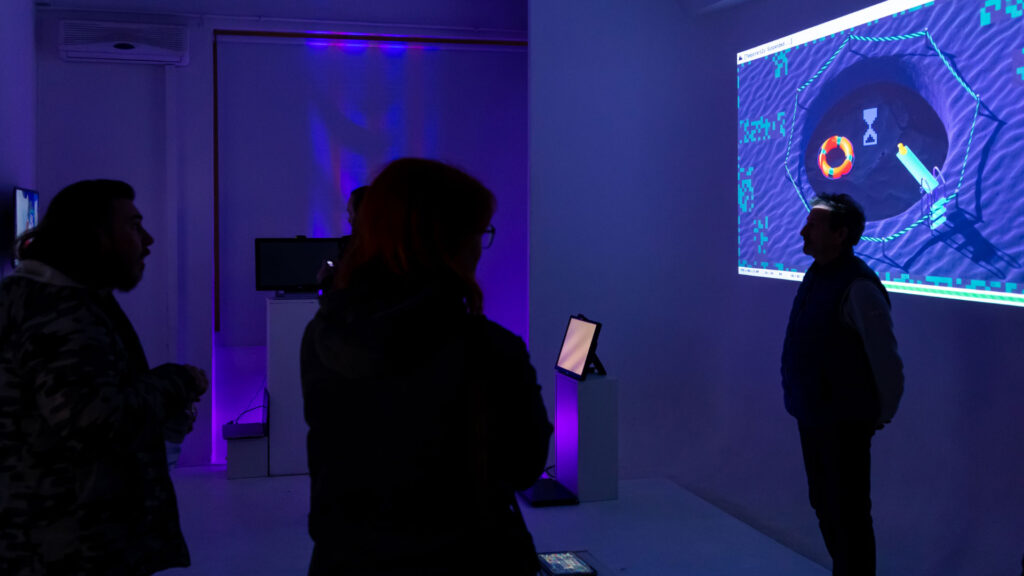
GM: Can we talk about some of the projects developed in the last few years at DIGITAL:CANVAS\.
MJ: It has been 5 years since we created DIGITAL:CANVAS\ and during this time we managed to make a lot of interesting events. From audiovisual performances like Heartouching, where Pilestra (Manuela Marchiș) was performing an invented sound alphabet with video projections of digital drawings that expressed her feelings, to community-driven events like Draw, where we filled the space with white canvases using all our touch-screen devices and invited people to let their imagination flow.
We also organized artist talks related to digital artistic practices, One Day Shows with local and international artists, group shows for platforms like StudentFest and Spam-Index and even used D:C\ as an immersive space for artists that have more complex projects like Flora Sopa’s Light Complex Simphony or Contemplating Life by Livia Mateiaș. With the help of professional mentors, we made workshops for kids and students related to VR practices and algorithmic digital drawings through the Pixel_ART project funded by the Științescu program.
During the pandemic period, we launched the C.19 Interface project, where we challenged artists to create works in the places that were caught by the lockdown and to send one digital work to promote it online through individual social media posts. And because we received a lot of proposals from artists all over the world, we decided to make a digital catalog, designed as individual cards resembling a room, to showcase all their digital works. The digital album can still be downloaded for free from the event post link on our Instagram page.
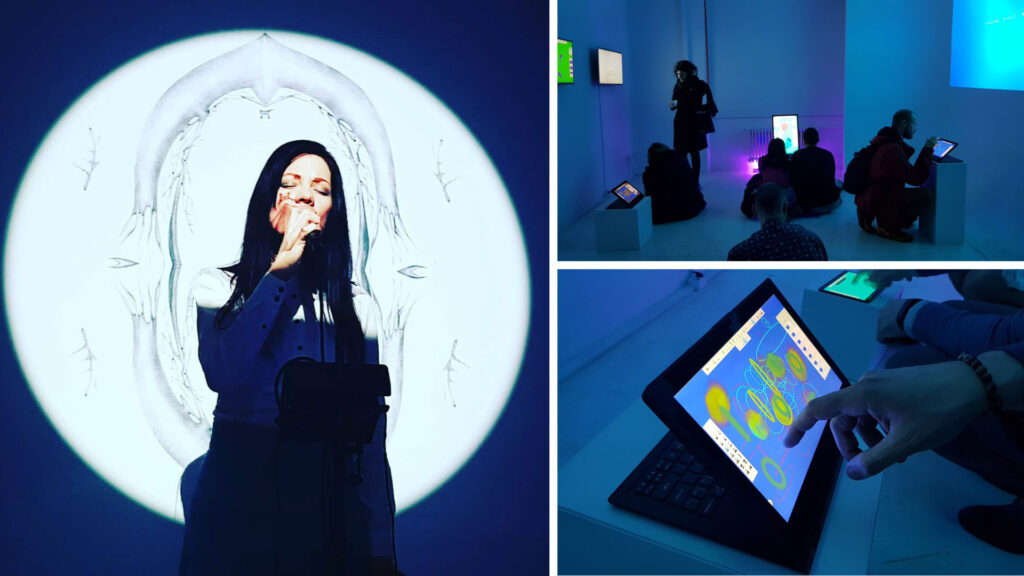
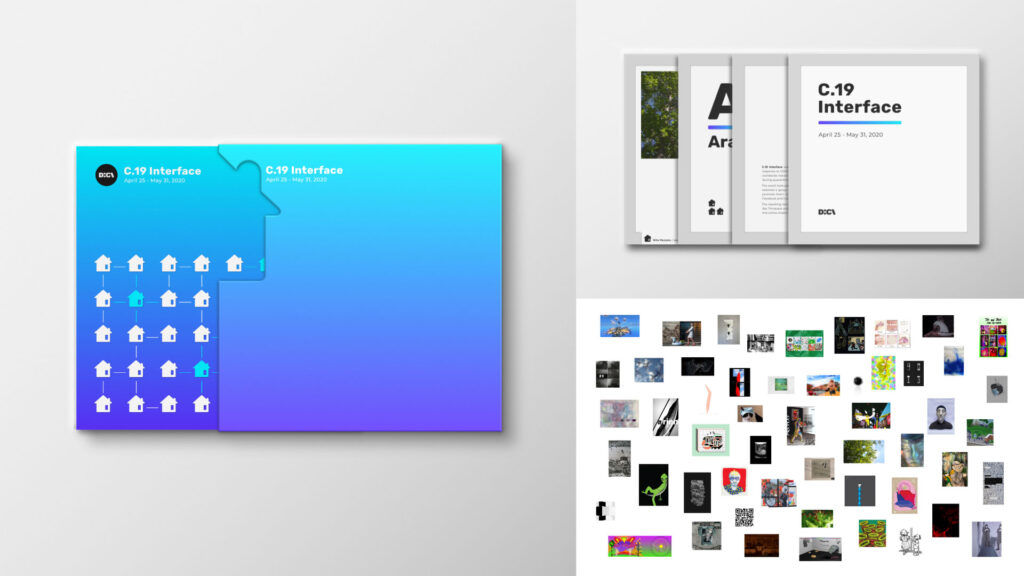
GM: Maybe we can talk about the medium of digital and how expensive and difficult it is to exhibit it. How were your experiences with exhibiting projects over the years?
MJ: Digital art isn’t easy to make. You need time for research, money to use the latest technologies, and a good context to exhibit your final project. Depending on the creative process, it’s important to know what you want to do and which types of technologies are able to “materialize” your idea in a visual form. At least, this is my approach. I never use only one program or technology in my projects. You need to “flow” with the medium since digital art is a medium that is always changing.
Hardware equipment can also be a problem, especially for young artists who want to present their digital content to a wider audience. This is why we opened DIGITAL:CANVAS\ in the first place: to stimulate and support the Romanian digital art scene. But this wasn’t the case for me back in 2010, when I was just starting to make digital-interactive art. There were no galleries or artist-run spaces dedicated to digital art, and if you wanted to exhibit digital content, you just had to have your own hardware equipment. Now things are changing fast, and there are way more opportunities to create and present this type of art. Art residences are great opportunities because they cover all the necessary expenses, so artists can focus only on their ideas.
There are still some challenges related to the digital art medium. Archiving or selling an interactive installation and transferring ownership to a client or an art collector are still challenging these days. Maybe in time things will fit in the right place because it seems that digital art is here to stay.
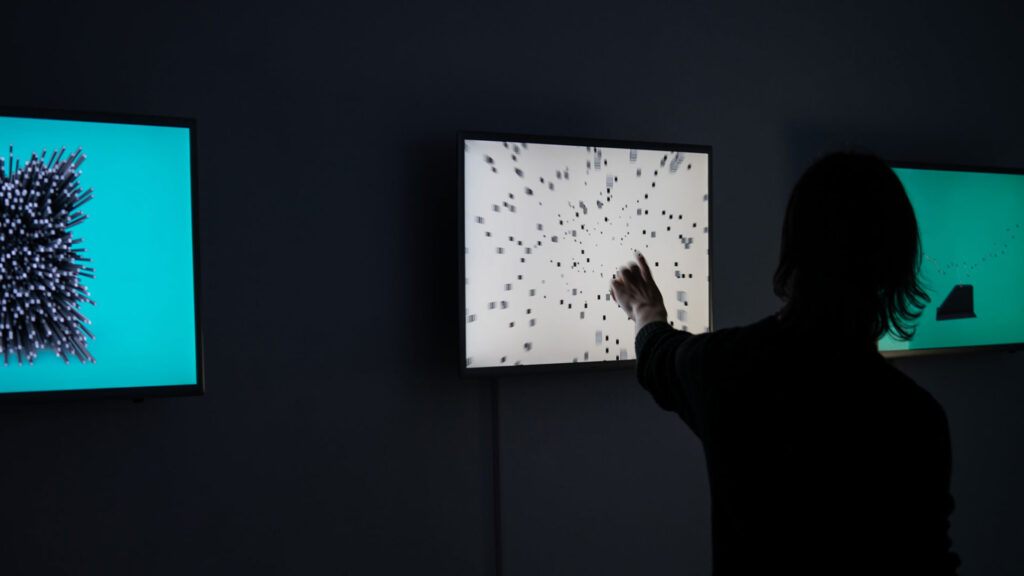
GM: What are your projects for the future?
MJ: The future is always uncertain… 🙂
Because of the complex schedule that we usually have, it’s hard for me to make long-term plans or predictions, so we’d rather take it step by step and see what the future holds. We will definitely remain open to new digital exhibition ideas, collaborations, or sponsorships, launch new open calls for digital artists, or even organize art residencies if we manage to receive some funding.
We will also try to improve DIGITAL:CANVAS\ online visibility with a website for a better overview of our activity during the years, because now we are present only on social media platforms.
Marius Jurca (b. 1984) is a new media artist from Timişoara, interested in neuroaesthetics, data visualization and the connections between art, science and technology. His projects explore the “mental flow” as identitary process manifested at psychical level in different environments and at specific periods of time. He uses custom algorithms and ciphers (based on numbers and sounds) to generate interactive interfaces called identity patterns (I.P’s). The interfaces are small apps or softwares that can be directly explored by user(s), their interactions been presented as unique collective patterns. Since 2006 he participate in different national and international art exhibitions, festivals and biennials. In 2014 he obtains a PhD in Visual Arts.
Gabriela Mateescu is a visual artist based in Bucharest. She uses the avatar Anastasia Manole for her digital work and is the co-funder of spam-index.com platform.
This journalistic material was produced with the support of an Energie! Creative Grant awarded by the Municipality of Timișoara, through the Center for Projects, within the Power Station component of the National Cultural Programme “Timișoara – European Capital of Culture in the year 2023”.
The material does not necessarily represent the position of the Center for Projects and the latter is not responsible for its content or how it may be used.